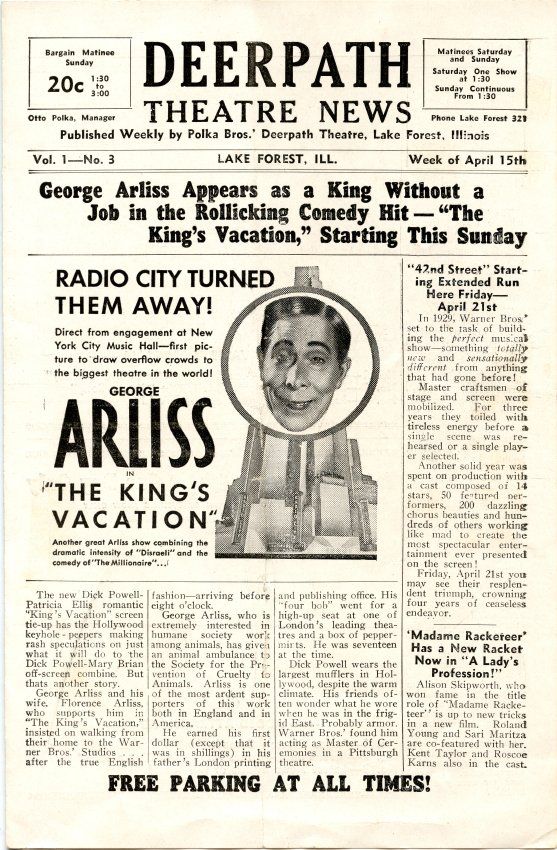Deerpath Theatre: 50+ Years of Movies in Town
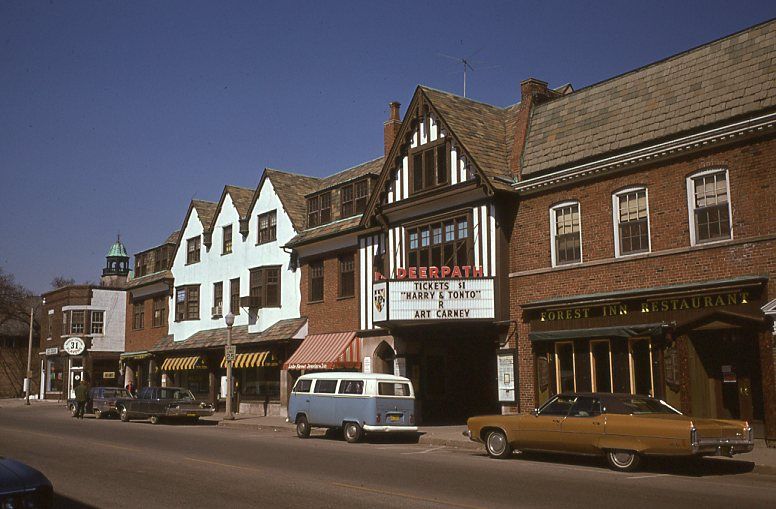
Step into the Lake Forest arcade at 272 E. Deerpath, just a few storefronts east of Bank Lane, and it’s the former site of the Deerpath Theatre, a popular North Shore entertainment stop for decades. The first film was “Glorious Betsy” in 1928, a silent film with experimental sound sequences. The movie house closed in 1985.
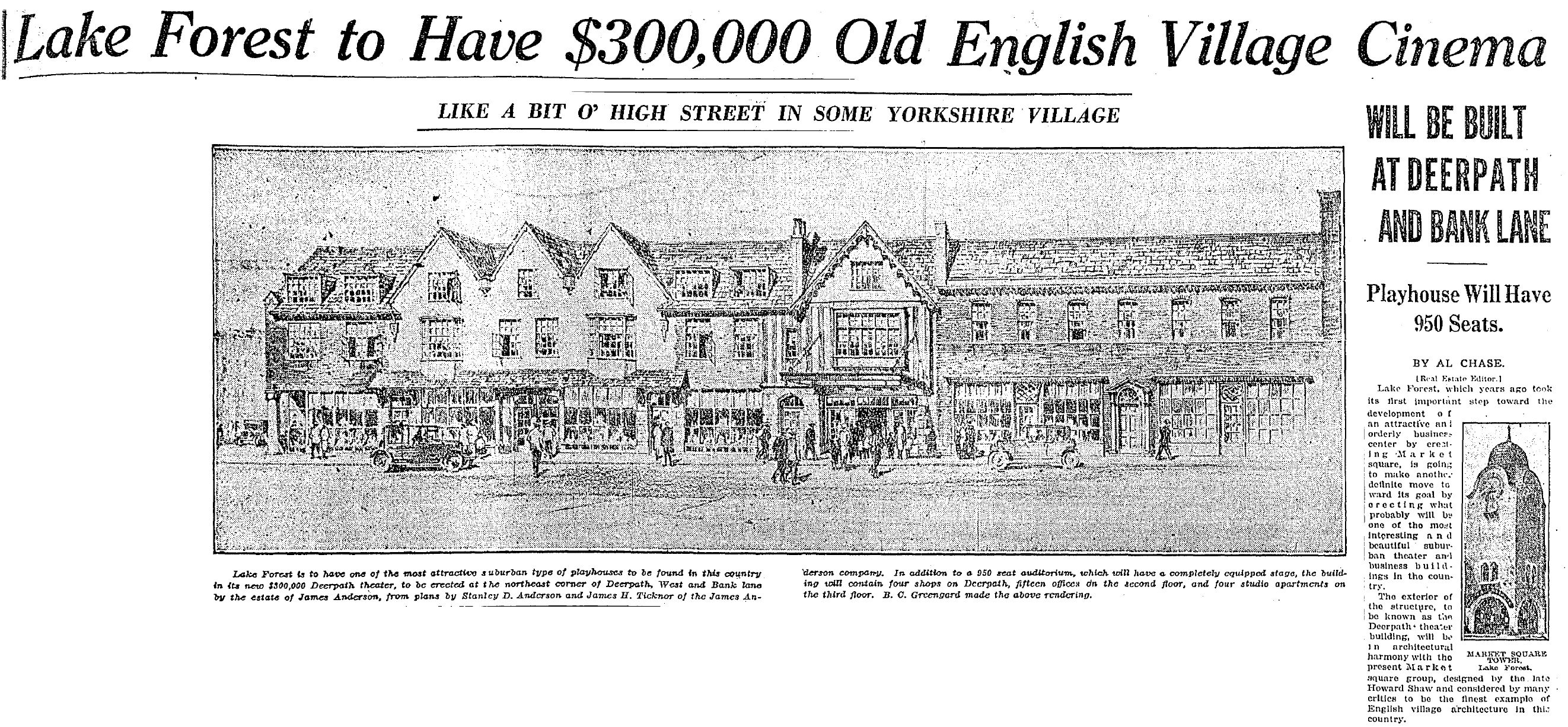
When plans were first announced for the state-of-the-art theatre to open in 1928, it commanded a banner headline in the Chicago Tribune that said: “Lake Forest to Have $300,000 Old English Village Cinema.”
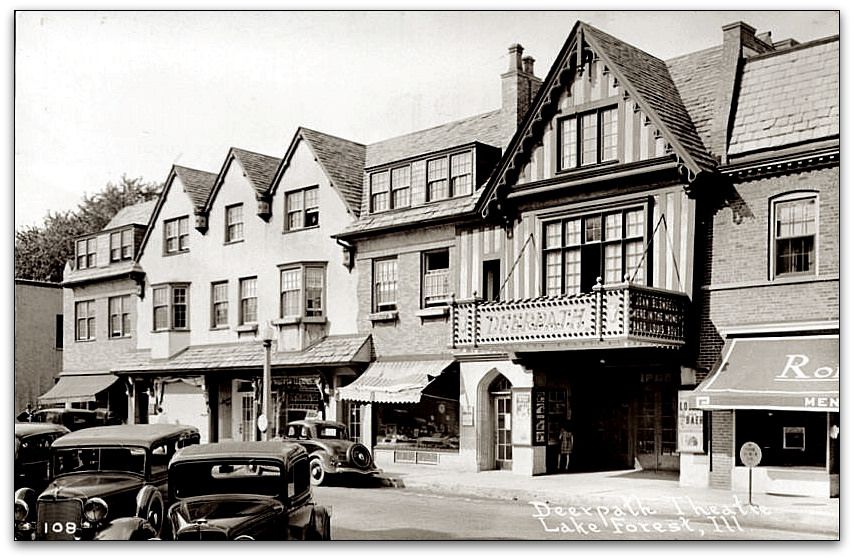

The interior was oak-paneled and featured organ pipes at the sides of the proscenium (the part of the theatre stage in front of the curtain). Though primarily a cinema theatre, the Deerpath also was equipped for stage productions and featured balcony seating. The theatre auditorium originally accommodated 950 persons, with a mezzanine also providing space for private parties.
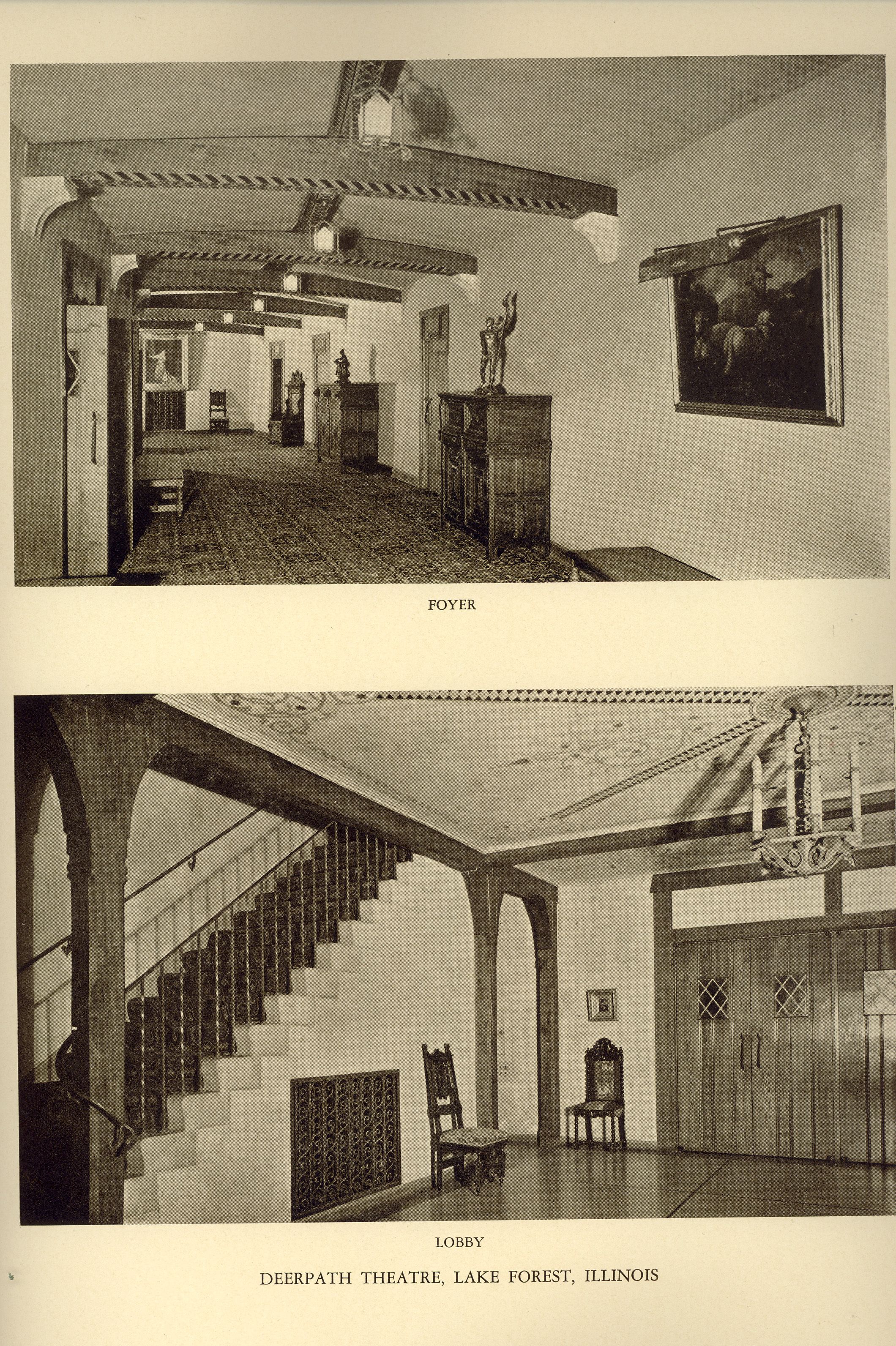
The Deerpath Theatre opened in the 1920s when the movie business was transitioning from silent films to "talkies" that included actors' dialogue and other sound effects. Of course, calling early films "silent" is not entirely accurate, considering that they were always accompanied by live music, and were therefore not silent at all. Sometimes there was orchestra accompaniment, while others had sound effects added by organ, and smaller movie houses used the piano to add sound. The Deerpath Theatre had an in-house organ.
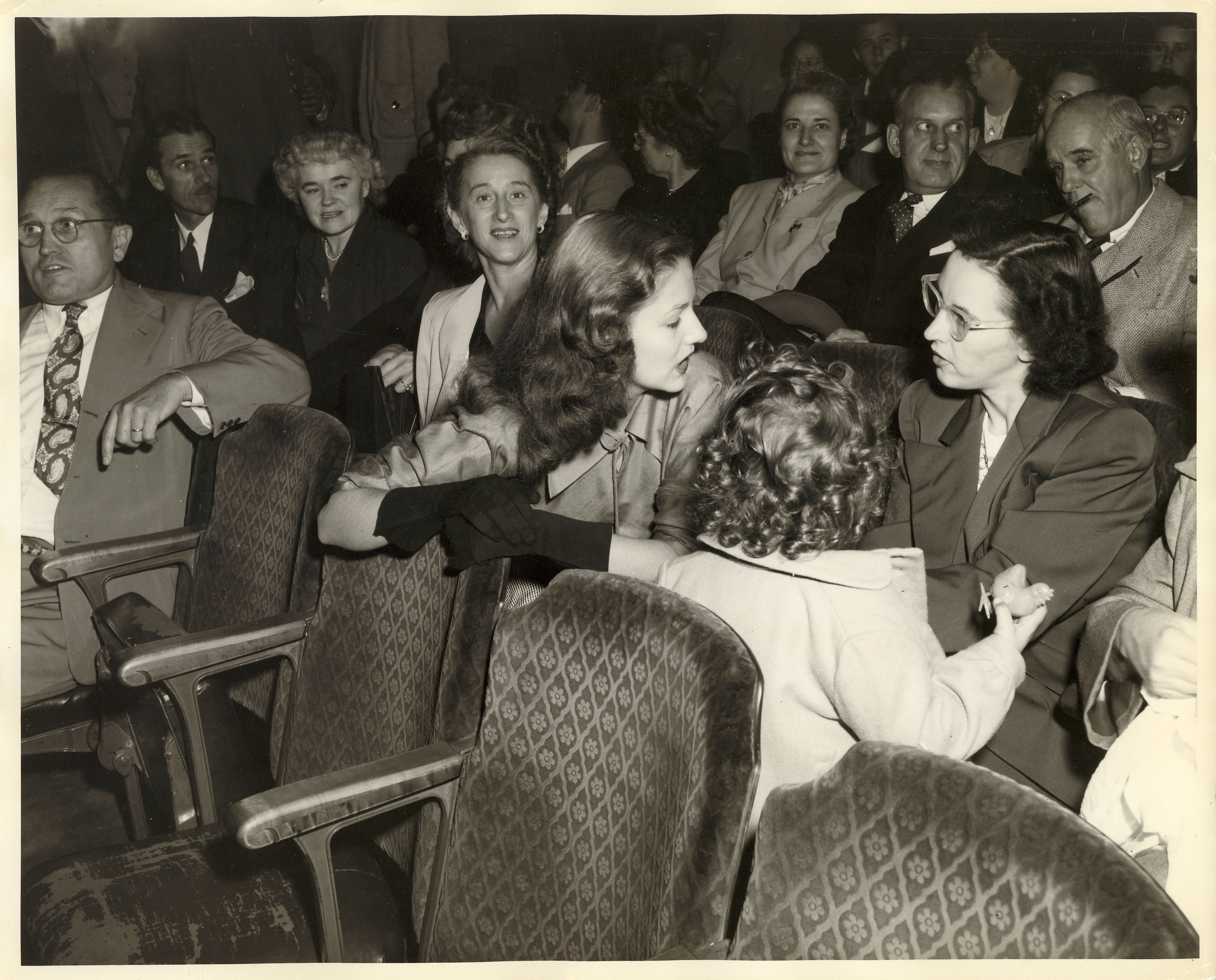
The Deerpath was managed for years by Joseph and Amelia Emma, whose daughter Rose Marie worked and watched movies in the theater before going on to Hollywood stardom as Joan Taylor. She was on hand for a special premiere in 1949 of her first major role in “Fighting Man of the Plains.” The marquee read: “Home Town Girl Makes Good!”
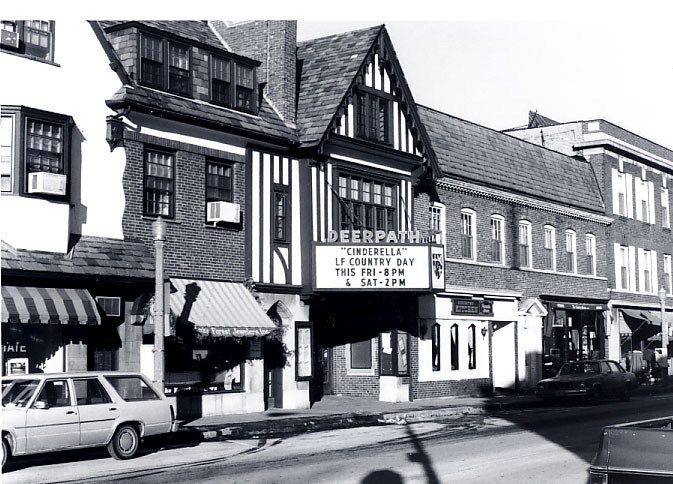
The theatre became an integral part of the community, also hosting benefit showings, speakers, and special events. In the early years, the Deerpath’s stage and seating also played host to numerous live events. Renowned opera star Marion Claire, who lived in Lake Bluff, sang on its stage. Famed harmonica player Larry Adler played there as well. Local schools like Lake Forest Academy and later Lake Forest Country Day used the facility for a stage production. During World War II, the Deerpath hosted War Bond rallies.

In the 1970s, there were special showings of classic silent films as well as sing-along musicals in which the audience became participants.
The facility showed first-run films for decades, then, due to sleeker, more corporate distribution methods became the place to go to see movies that already had made the rounds at a cheaper price. It underwent extensive renovations under new ownership in the early 1980s, re-opening with a splash.
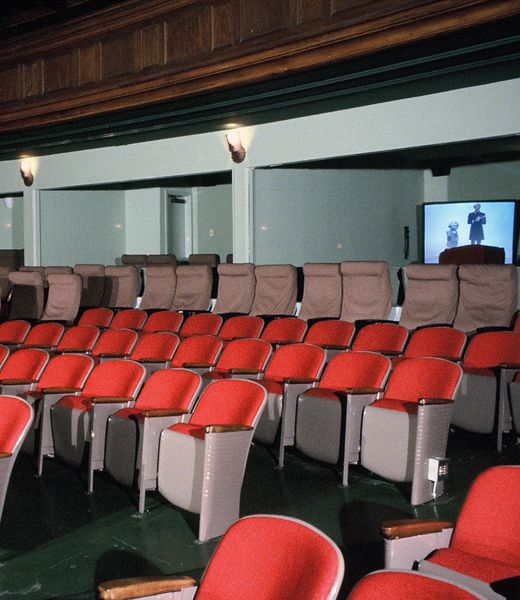
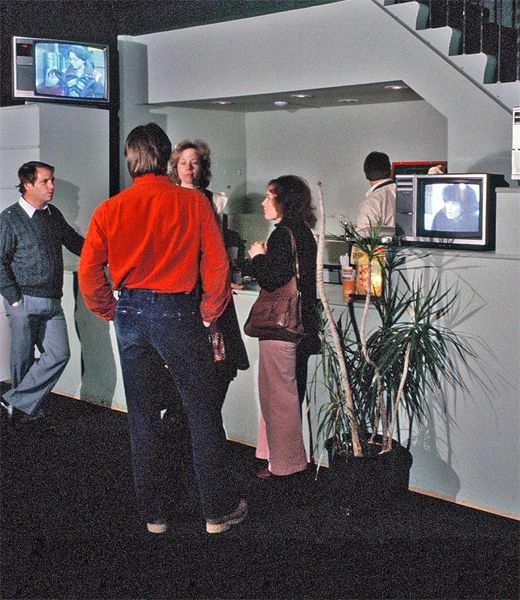
The first film was “Pennies From Heaven” with Steve Martin and Bernadette Peters. It was followed with movies such as “Superman III,” “Four Friends,” and the original “La Cage Aux Folles.”
The Deerpath’s new-look had seating for 800. It included private party rooms with 21-inch color TV sets to also entertain, but by 1985 the theater was closed for good.
